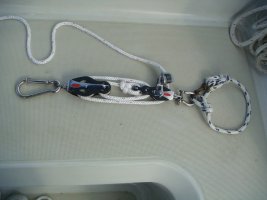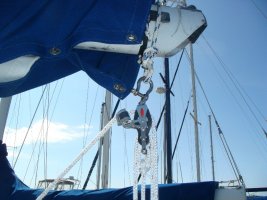I'm looking for feedback on proper installation and use of a horseshoe buoy used together with a man overboard pole. Specifically, how are the two tied together, how long should the line between them be? I assume both are not attached to the boat in any way. I have a full sized Jim Buoy horseshoe buoy and a Jim Buoy MOB pole that came with my boat, but I don’t have the instructions with either of them. If anyone has the installation and use directions for the Jim Buoy stuff and can send it or attach it to a response I'd appreciate it.
Also, I was thinking of replacing the horseshoe buoy with a Lifesling, but looking into that option, it appears maybe you should have both onboard.
Thanks
Also, I was thinking of replacing the horseshoe buoy with a Lifesling, but looking into that option, it appears maybe you should have both onboard.
Thanks



